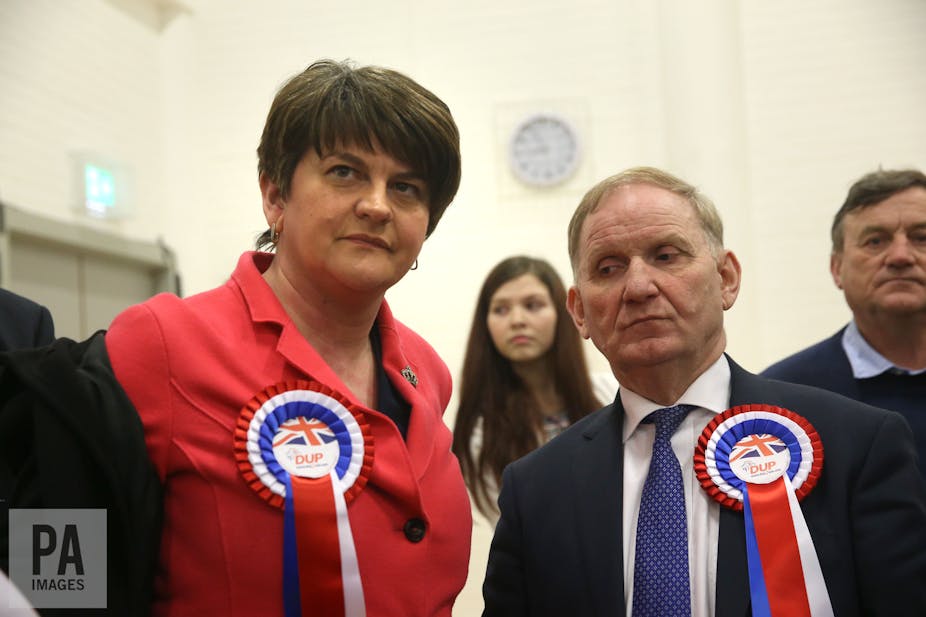The Democratic Unionist Party (DUP) went into Northern Ireland’s latest election with ten seats more than its arch rival Sinn Féin. It came out the other side with just one seat more. This is a poor showing for the DUP and particularly for its leader Arlene Foster, whose campaign centred on bragging rights as the biggest party in the land.
Sinn Féin’s first preference vote share rose in this election by 4%. The DUP was down by 1%. Only a tiny number of votes separated the parties, with the DUP only marginally ahead of Sinn Féin by 28.1% compared to 27.9%.
Which party is the biggest is mainly of symbolic concern rather than relating to real political power. Under Northern Ireland’s power sharing system there is a shared prime ministership, but the leader of the bigger party becomes first minister and the leader of the smaller becomes deputy first minister.
What does matter about the actual number of seats won by each party is the fact that the DUP fell beneath 30 seats at this election. According to the rules of power sharing this means that the DUP no longer has the power to issue a “petition of concern” – a mechanism to try and block legislation it does not like. The party has used this approach in recent years to block the prospect of same-sex marriage, so it is a meaningful loss on top of the more aesthetic concern of seeing Sinn Féin eat into the vote share.

The election was also a disappointing one for Mike Nesbitt, the leader of the smaller unionist party (UUP). He has already resigned as leader after his hoped-for leap forward in the polls did not materialise. The smaller nationalist party, the SDLP, had a reasonably good election, keeping its vote share constant and managing to win 12 seats compared to the UUP’s ten. The cross-community Alliance party is also happy with its performance, with its vote share rising two points to 9.1%.
The rise in voter turnout was a surprise too. Having had an election as recently as last May, voter fatigue and exasperation might have been predicted, especially as many people felt the election was unnecessary. But turnout actually rose by 10% to 65%.
Now what?
While most democracies have elections in order to form a government, this election in Northern Ireland will probably produce negotiators rather than legislators. Although there are exciting ups and downs in the election results, the basic picture remains the same as before the vote. The two big parties are the DUP and Sinn Féin and the question looms: can they re-establish the power sharing government that they were running before Sinn Féin collapsed it?
The next three weeks will likely see much encouragement from Dublin and London to do just this. But Sinn Féin is demanding that Foster steps aside while an investigation into the “cash for ash” scandal takes its course. The DUP looks unlikely to concede on this.
If the DUP/Sinn Féin humpty dumpty cannot be put back together again within three weeks, the UK government will have to decide whether to re-introduce direct rule from London or to hold another election. Northern Ireland citizens’ appetite for democratic participation might wear thin if another election were called. And most heavyweight boxers need at least a few months before a rematch. So a period of direct rule looks likely.
This, in turn, begs the question as to whether this really is Sinn Féin’s desired option. As a party that tends more than most to strategically plan for the medium term, this election may be looked back upon as a turning point. Sinn Féin may be moving from power sharing “in” Northern Ireland (between nationalists and unionists) to power sharing “for” Northern Ireland (between London and Dublin). That could be the picture if direct rule morphs over time into “joint authority”.
In the meantime, while these nuances play out, the UK is preparing to leave the EU – a momentous change that could knock over the best laid plans.

